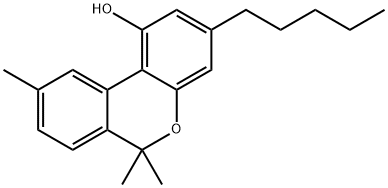- 52140-36-0Beryllium, (h5-2,4-cyclopentadien-1-yl)ethynyl-
- 52142-01-5L-Tyrosine,O-(phenylmethyl)-, phenylmethyl ester, hydrochloride (1:1)
- 52146-86-8Benzenesulfonic acid,5-methyl-2,4-dinitro-
- 52152-93-9Cefsulodine sodium
- 521-55-1Naphthalene,1-(3,4-dimethoxyphenyl)-1,2,3,4- tetrahydro-6,7-dimethoxy-2,3-dimethyl-,(1S,2R,3S)-
- 5215-92-94-methyl-4-nitro-pentan-1-ol
- 5216-04-6Pyridine, 3,4-diphenyl-
- 52161-26-9Sulfuric acid,dianhydride with 1-aziridinyl[[bis(1-aziridinyl)phosphinyl]oxy]phosphinic acid(9CI)
- 5216-17-1Benzonitrile,2,3,5,6-tetrafluoro-
- 521-61-9Physcione
Hot Products
- 104987-11-3Tacrolimus
- 141-53-7Sodium formate
- 8001-54-5Quaternary ammonium compounds, alkylbenzyldimethyl, chlorides
- 9003-39-8Povidone
- 10161-34-9Trenbolone acetate
- 402957-28-2Telaprevir
- 68-19-9Cyanocobalamin
- 7631-86-9Silicon dioxide
- 302-79-4Tretinoin
- 77-92-9Citric acid

|
Basic Information |

|
Post buying leads |

|
Suppliers |

|
Cas Database |

 This product is a nationally controlled contraband, and the Lookchem platform doesn't provide relevant sales information.
This product is a nationally controlled contraband, and the Lookchem platform doesn't provide relevant sales information.
| Name |
Cannabinol |
EINECS | 200-659-6 |
| CAS No. | 521-35-7 | Density | 1.061 g/cm3 |
| PSA | 29.46000 | LogP | 5.72780 |
| Solubility |
Stability
Toxicology
Toxicity data |
Melting Point |
76 - 77 C |
| Formula | C21H26 O2 | Boiling Point | 476.5 °C at 760 mmHg |
| Molecular Weight | 310.436 | Flash Point | 212.7 °C |
| Transport Information | N/A | Appearance | thin platelets |
| Safety | Low toxicity by ingestion. An experimental teratogen. Other experimental reproductive effects. Human mutation data reported. When heated to decomposition it emits acrid smoke and fumes. See also CANNABIS. | Risk Codes | 11-23/24/25-39/23/24/25 |
| Molecular Structure |
|
Hazard Symbols |
 F F T T
|
| Synonyms |
Cannabinol(6CI); 3-Amyl-1-hydroxy-6,6,9-trimethyl-6H-dibenzo[b,d]pyran;6,6,9-Trimethyl-3-pentyl-6H-dibenzo[b,d]pyran-1-ol; CBN; NSC 134455 |
Article Data | 34 |
Cannabinol Chemical Properties
Molecular Structure of Cannabinol (CAS NO. 521-35-7):

IUPAC Name: 6,6,9-Trimethyl-3-pentylbenzo[c]chromen-1-ol
Molecular Formula: C21H26O2
Molecular Weight: 310.429940 g/mol
XLogP3-AA: 6.1
H-Bond Donor: 1
H-Bond Acceptor: 2
Canonical SMILES: CCCCCC1=CC2=C(C(=C1)O)C3=C(C=CC(=C3)C)C(O2)(C)C
InChI: InChI=1S/C21H26O2/c1-5-6-7-8-15-12-18(22)20-16-11-14(2)9-10-17(16)21(3,4)23-19(20)13-15/h9-13,22H,5-8H2,1-4H3
InChIKey: VBGLYOIFKLUMQG-UHFFFAOYSA-N
Index of Refraction: 1.561
Molar Refractivity: 94.87 cm3
Molar Volume: 292.5 cm3
Surface Tension: 41.6 dyne/cm
Density: 1.061 g/cm3
Flash Point: 212.7 °C
Enthalpy of Vaporization: 76.84 kJ/mol
Boiling Point: 476.5 °C at 760 mmHg
Vapour Pressure: 1.06E-09 mmHg at 25 °C
Water Solubility: 0.0021 mg/L at 25 °C
Storage Temp.: 2-8 °C
BRN: 0237145
Cannabinol Toxicity Data With Reference
| 1. | dni-hmn:hla 10 µmol/L | ANTRD4 Anticancer Research. 3 (1983),211. | ||
| 2. | mnt-mus-ipr 50 mg/kg/5D-I | PHMGBN Pharmacology: International Journal of Experimental and Clinical Pharmacology. 21 (1980),277. | ||
| 3. | dni-mus-ipr 200 mg/kg | RCOCB8 Research Communications in Chemical Pathology and Pharmacology. 17 (1977),703. | ||
| 4. | dni-mus:lng 2300 nmol/L | CNREA8 Cancer Research. 36 (1976),95. | ||
| 5. | cyt-mus-ipr 50 mg/kg/5D-I | PHMGBN Pharmacology: International Journal of Experimental and Clinical Pharmacology. 21 (1980),277. | ||
| 6. | spm-mus-ipr 50 mg/kg/5D-C | PHMGBN Pharmacology: International Journal of Experimental and Clinical Pharmacology. 18 (1979),143. | ||
| 7. | orl-mus LD50:13,500 mg/kg | JPETAB Journal of Pharmacology and Experimental Therapeutics. 88 (1946),154. |
Cannabinol Consensus Reports
EPA Genetic Toxicology Program.
Cannabinol Safety Profile
Safety Information of Cannabinol (CAS NO. 521-35-7):
Hazard Codes: F  ,T
,T 
Risk Statements: 11-23/24/25-39
R11:Highly flammable
R23/24/25:Toxic by inhalation, in contact with skin and if swallowed
R39:Danger of very serious irreversible effects
Safety Statements: 7-16-36/37-45
S7:Keep container tightly closed
S16:Keep away from sources of ignition
S36/37:Wear suitable protective clothing and gloves
S45:In case of accident or if you feel unwell, seek medical advice immediately (show the label whenever possible.)
RIDADR: UN 1230 3/PG 2
WGK Germany: 1
RTECS: HP8575000
Low toxicity by ingestion. An experimental teratogen. Other experimental reproductive effects. Human mutation data reported. When heated to decomposition it emits acrid smoke and fumes. See also CANNABIS.
Cannabinol Specification
Cannabinol with cas registry number of 521-35-7 is also known as 3-Amyl-1-hydroxy-6,6,9-trimethyl-6H-dibenzo(b,d)pyran ; 5-17-04-00567 (Beilstein Handbook Reference) ; 6,6,9-Trimethyl-3-pentyl-6H-dibenzo(b,d)pyran-1-ol ; 6H-Dibenzo(b,d)pyran-1-ol, 6,6,9-trimethyl-3-pentyl- ; 6,6,9-Trimethyl-3-pentyl-6H-dibenzo(b,d)pyran-1-ol. Product derived from Cannabis sativa ; Cannabinol [INN:BAN] ; Cannabinolo ; Cannabinolo [DCIT] ; Cannabinolum ; Cannabinolum [INN-Latin] ; NSC 134455 . Cannabinol is a non-psychoactive cannabinoid found in Cannabis sativa and Cannabis indica. It is also a metabolite of tetrahydrocannabinol (THC). CBN acts as an agonist at the CB1 and CB2 receptors, but with lower affinity in comparison to THC.